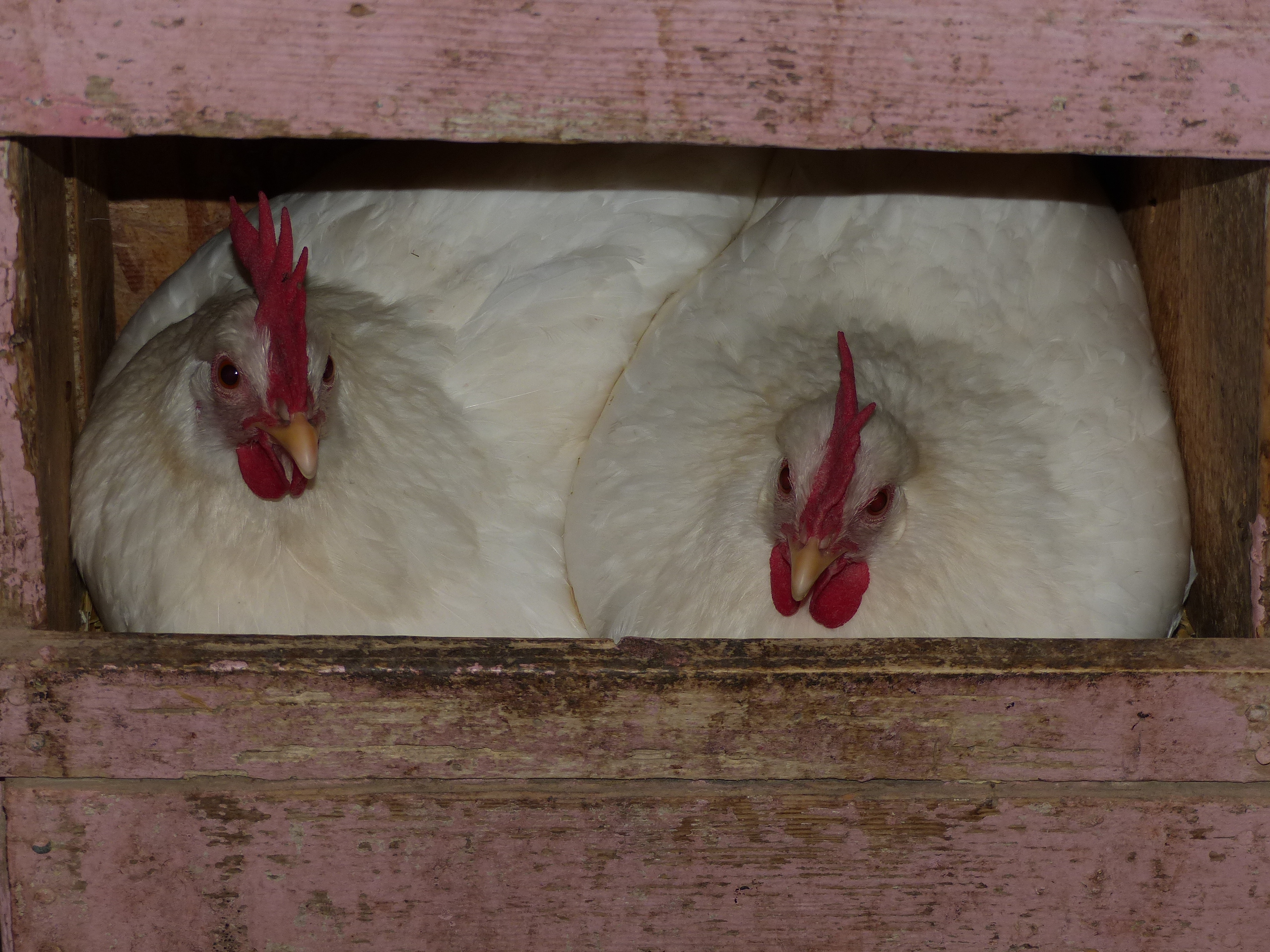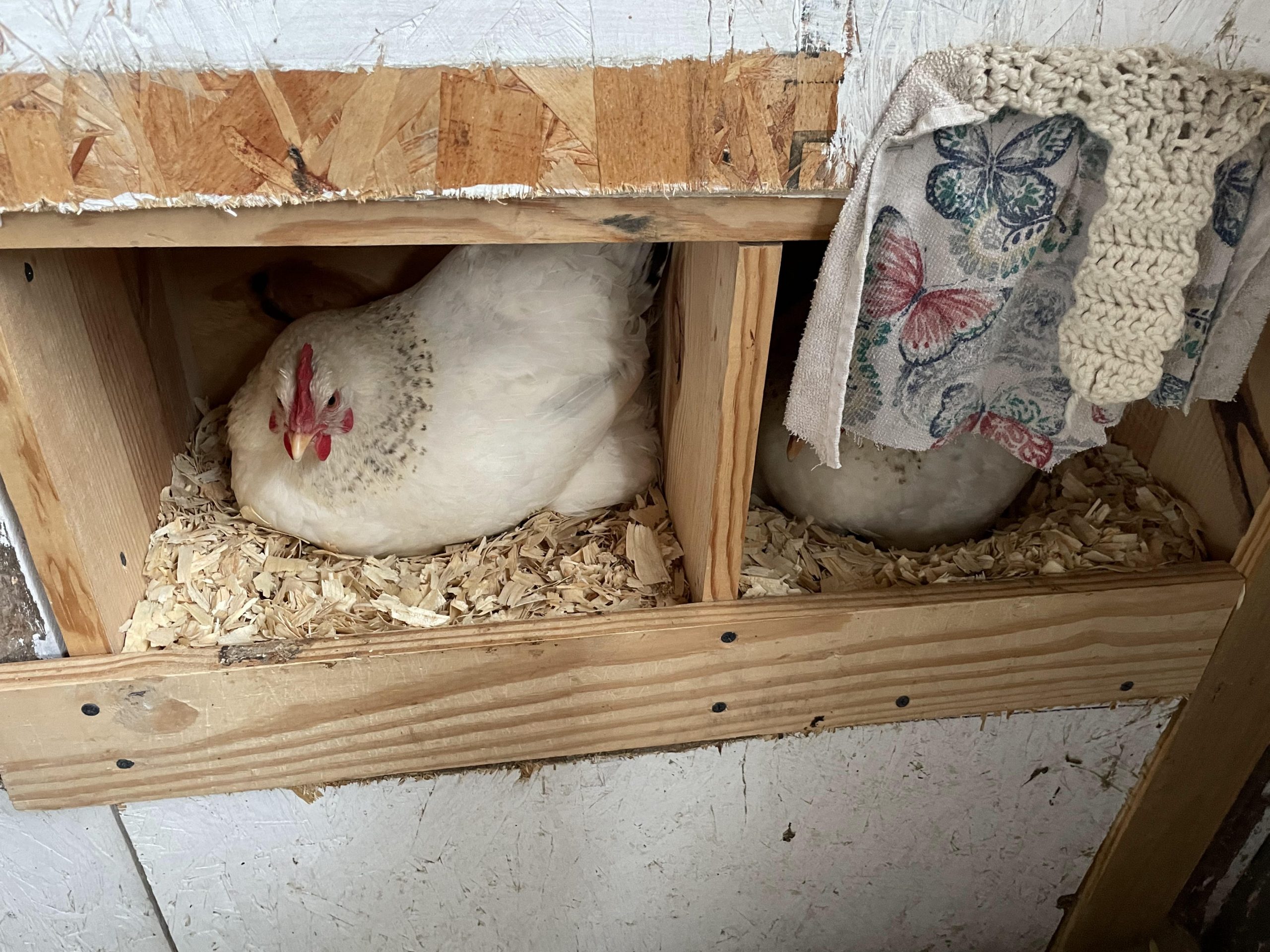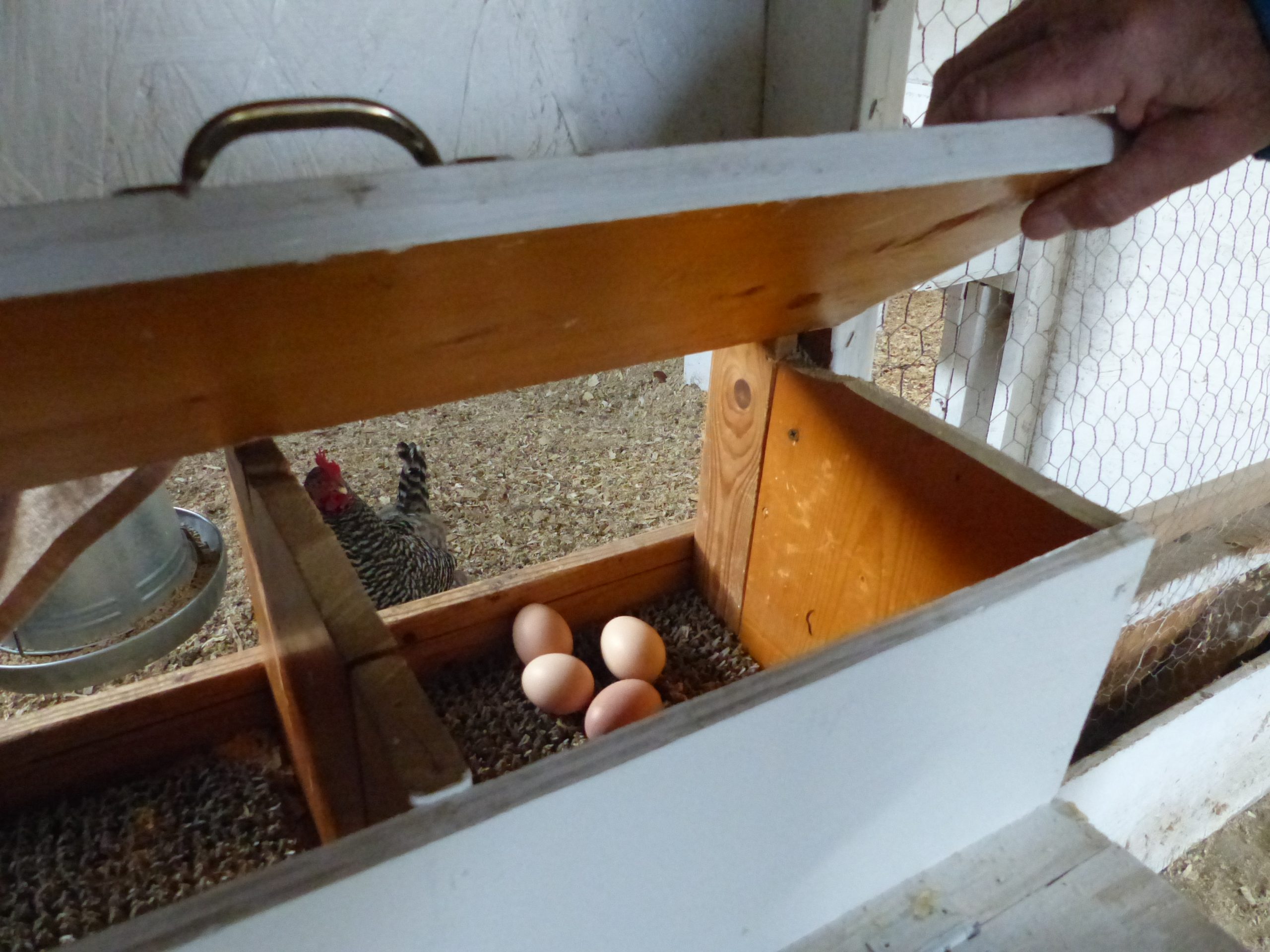Perhaps the greatest joy that comes from keeping backyard chickens is the wonderful gifts hens leave in their nests. Some are huge. Others are small. One may be long and skinny, while others are nearly round. They might have light or dark brown, white, or even blue or green shells. An occasional one may sport speckles. Those eggs are beautiful, diverse, fresh and nutritious.
Providing clean, safe and comfortable nests encourages hens to lay where eggs are easy to collect. That involves putting enough nests in the right places and collecting eggs often.

How Many Nests? How Big?
A rule of thumb is to provide a nest box for every three or four hens, but chickens are quirky. Put four nests in the coop and sometimes three hens will cram into one, leaving the others vacant. Go figure! Individual hens often prefer a particular nest and return to it every time she lays. If other hens are in “her” nest she’ll cram right in.
Full size Hamburgs or Leghorns only weigh about four pounds, but a Jersey Giant can tip the scales at ten pounds. Generally sizing a nest to fit mid-sized breeds, like Rhode Island Reds or Plymouth Rocks works. Bigger breeds may need to squeeze in but they’ll manage, while smaller breeds have plenty of room.
There is no perfect nest size or shape but one about a foot wide and deep works fine. Farm stores sell wire or plastic manufactured nests, but making them from scrap wood is an easy basic carpentry project. A homemade nest is merely a wooden box with one end open for the hen to enter. Five-gallon plastic buckets also work.
Placing Nests
Most coop plans show nests placed inside the hen’s living quarters. Hens love them but collecting eggs means a person must enter the coop. That takes time and may scatter the flock. There’s an easier way. Positioning nests so the opening is flush with the coop wall but the body of the nest extends outside the coop makes collecting easier. A hinge and handle make it a snap to open the nest from the top and collect eggs.
Chickens don’t mind if the nest is high or low, so if children often collect eggs, placing the nest low makes the fun task easier. Bending over can be a problem for people who haven’t been children for many years. Positioning nests higher makes collecting easier.
Some nests are made so eggs roll out into a tray. It makes collecting a snap and keeps eggs clean and unbroken, but chickens may avoid them.
Privacy
Like people, every chicken is an individual. Many hens crave privacy when they lay. Stapling a curtain over the top half of the opening lets them sit quietly in the darkness. Other hens don’t seem to care if their nest is private or not. Some will let a person reach under her and retrieve previously laid eggs. Others don’t like that a bit and peck or squawk. It’s best to collect when all hens have left the nest.

Cushioning Eggs
Forcing chickens to lay delicate eggs on bare wood, plastic or metal is a recipe for breakage and a nest mess. An inch of wood flakes or straw on the nest’s bottom provides plenty of cushioning. A one-inch-high board, nailed across the bottom of the nest opening keeps the cushion from being pushed out by hens. Soft carpet, cut to fit the inside of the nest, also works.
Collecting
On traditional old-time farms, collected eggs were carried in wire baskets. They still work fine but are far too big for the half dozen, or so, eggs laid in a typical backyard coop. Those beautiful eggs deserve an attractive basket or decorative pail to transport them from the nest to the kitchen.

Eggs are delicate. During summer’s sweltering heat they can spoil, and winter’s chill freezes them quickly. Also, a hen sometimes breaks previously laid eggs when she enters a nest. Collecting eggs often and storing them in a safe refrigerator solves the problems.
Well placed nests are a key to keeping freshly laid eggs clean and easy to collect.